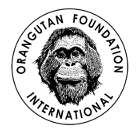Each year, as the rains cease and the long, hot, dry days pile up on top of each other like a pile of kindling, OFI faces one of the most difficult challenges to protecting orangutans and their forest habitat: the fires. This year is no exception. The fires are here and they are bad. In… Continue reading Breaking News: 2015 Fire Season
Month: September 2015
Surgery report on “Selina”, a rescued sun bear cub
Report by: Romain Pizzi, BVSc MSc DZooMed MACVS (Surg) FRES FRGS MRCVS Royal College of Veterinary Surgeons, recognized Specialist in Zoo & Wildlife Medicine and Kirsty Officer, BSc BVMS BA MRCVS When “Selina” a female sun bear cub, whose mother was probably killed in January 2014, and who was handed over to OFI in late… Continue reading Surgery report on “Selina”, a rescued sun bear cub
Orangutan of the Month: Dynamic Piko
All orangutans are special but sometimes some are just slightly more special than others in that you remember them better. They stand out. They catch your eye and suddenly you can’t stop observing them. This happened to me with Piko, a male juvenile orangutan at the Orangutan Foundation International (OFI) Orangutan Care Center and Quarantine… Continue reading Orangutan of the Month: Dynamic Piko
Orangutan Of The Month: Anna with the Striking Eyes
The sun shines fiercely as I stand in the forest, head craned towards the treetops. Moments before I had an orangutan in my sights but now she has seemingly disappeared. I know she has gone in the direction where I am looking, but I seem to have lost track of her. High in the canopy,… Continue reading Orangutan Of The Month: Anna with the Striking Eyes
Popsicle Playtime at the OCCQ
Here at the Orangutan Foundation International (OFI) Care Center and Quarantine in Kalimantan, Indonesia, enrichment forms an important part of the day to day activities for the orangutans. Providing daily food-based enrichment for the orangutans means that they are given the opportunity to problem solve, rip, tear, and explore the parcels and treats they receive.… Continue reading Popsicle Playtime at the OCCQ
Orangutan Genome (part 2): Unexpected Genetic Diversity
Planet earth is currently home to seven billion people . In comparison, the approximately 60,000 orangutans remaining in the wild represent an exceedingly small number. Despite this 140,000-fold difference in current population size, analysis of the orangutan genome yields a surprising discovery: orangutans are much more genetically diverse than humans.
